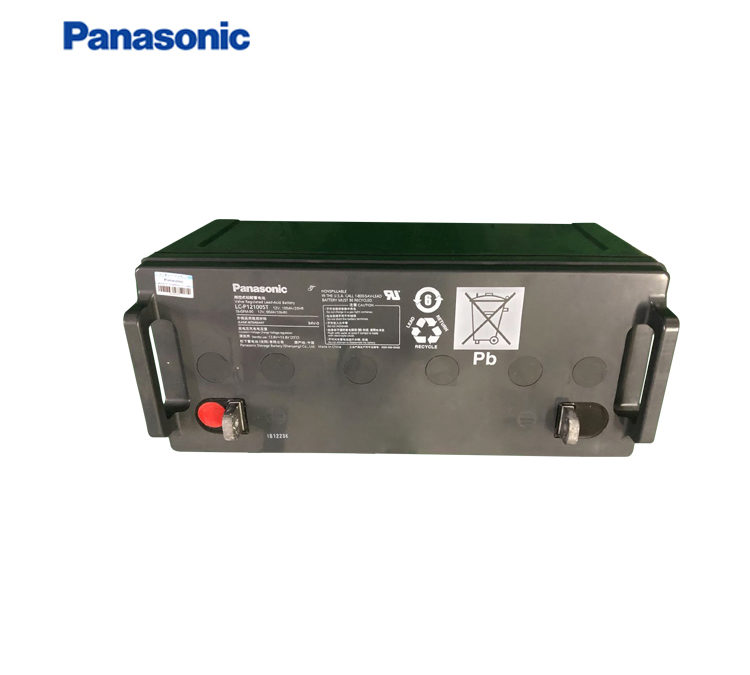
May 19, 2022 | Company News
The life of a lead acid battery directly affects the life of the vehicle. So, how can lead acid batteries increase their service life? What are the six tips for lead acid battery maintenance? Here’s a brief overview with me.
Generally if the distance is far away, in order to be able to charge in a foreign place, you can accompany an extra charger with the charger, if you need to charge during the day, you can choose a spare charger, the night charging time is longer, so try to choose the original charger is better.
Do not remove the speed limit of the 12V 100Ah lead acid battery controller
It is best to remove the speed limit from the controller when the vehicle is in motion, this will effectively increase the life of the battery, but will make the car faster, you must pay special attention when driving.
Protect the 12V 100Ah lead acid battery charger
The manuals of regular brands of lead acid batteries will have detailed instructions on how to protect the charger, so you must check the best way to use and protect the charger at the first time, otherwise it will be too late if you wait until problems arise. The chargers currently on the market are designed to be highly resistant to vibration, so do not move the battery around unless it is necessary, and if it is necessary, make sure it is packed in foam first to prevent it from being injured by external forces, which may displace the internal appliances and affect their use.
12V 100Ah lead acid battery charger placement
After the charger has been used, it must be put away in a dry and cool place, away from direct sunlight, otherwise the efficiency of the charger will be affected. In addition, when charging the lead acid battery, it is best to be in a ventilated place so as to reduce the damage to the battery and also to increase the life of the charger.
Charge the 12V 100Ah lead acid battery every day
If the battery is normally used, it is best to charge it every day to keep it in a shallow cycle and increase the life of the battery. Since the indicator light of a lead acid battery comes on at approximately 97% to 99%, it is best to charge the battery for as long as possible, even if the indicator light is already on.
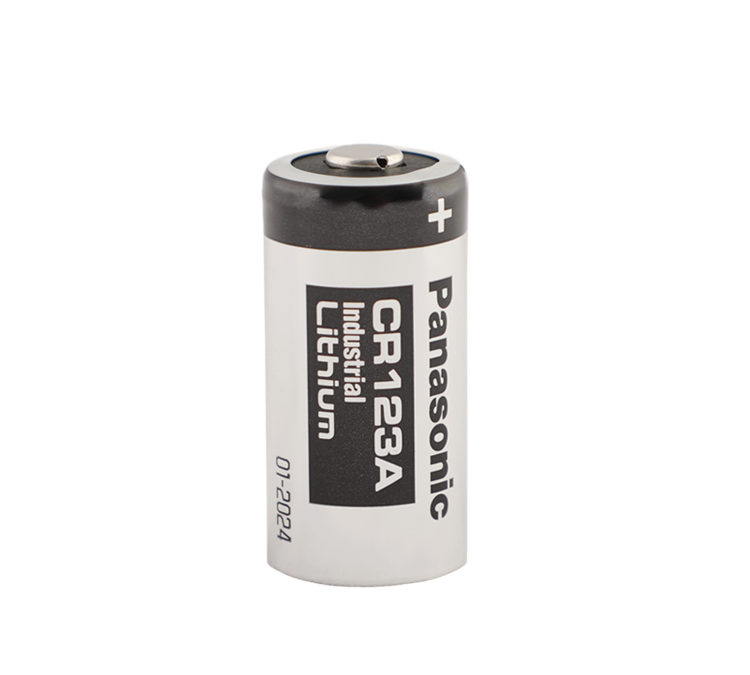
May 18, 2022 | Company News
The CR123A battery is a 2/3A size lithium manganese, 3.0V non-rechargeable battery. CR123A battery size is CR17335, which is a 17mm diameter, 33.5mm height lithium manganese column battery. CR2 is CR15270, which is a 15mm diameter, 27mm height lithium manganese column battery.
Price and availability
AA batteries are inexpensive and readily available and are the reigning champion of the EDC torch battery category. Because they are so easy to obtain and stock up on, many EDC enthusiasts favour AA torches. This is a crucial advantage when in an emergency or survival situation.
You sometimes have to look at the bottom of the supermarket shelf to find some CR123A batteries. They are often thought to be the type of batteries that should be used in professional appliances (like cameras). They are also more expensive – 1 decent 12-cell box of CR123A batteries costs about $20, while 12 alkaline AA batteries cost half that amount.
Size
The most obvious difference between AA batteries and CR123A batteries is their size. AA batteries are long and thin, while CR123A batteries are short and stubby. The difference may not seem significant, but it is especially noticeable when it comes to the size of torches using this battery, especially with dual-cell torches (usually 2AA torches are much longer than 2xCR123 torches). Generally speaking, AA torches are longer and thinner, CR123A torches tend to be shorter and thicker.
For us EDC enthusiasts, the first thing to consider is the size and shape of the kit, as it has implications beyond just carrying it in your pocket, and a good feel in your hand. Here’s an example of a regular CR123A torch compared to a Fenix LD11 torch, a single AA torch that is a good model. Depending on the size of your hand and how you need to hold it, you may have to think more about the battery configuration than others. I have smaller hands and prefer the shorter CR123A torch, but the same torch may make it uncomfortable for people with larger hands.
Output and range
The torch relies on the voltage from the batteries to drive its LED to emit a bright beam of light (measured in lumens). An AA battery has a voltage of only 1.5V, but this is enough to produce a powerful beam – for example, the Fenix LD11 can run at 130 lumens for 2 hours on the high brightness setting. And the 3V CR123A battery can provide the Fenix PD25 to run at 400 lumens for 70 minutes in the very bright position. Although the LEDs they use are different, in general CR123A torches can achieve a greater output than AA torches.
To make the most of this power, sometimes manufacturers produce CR123A torches like a ‘pocket rocket’, for example with a larger head to increase range and to control excess heat from the increased voltage, making the overall size of the torch close to an AA torch (see Fenix PD25 vs Fenix LD11).
While this is certainly impressive, brightness is not everything. Battery life is just as important (especially in an emergency). At the same 50 lumens, the LD11 lasts up to 7 hours and 50 minutes on AA batteries. Not bad, eh? Well, the PD25 lasts up to 9 hours and 5 minutes with a CR123A battery.
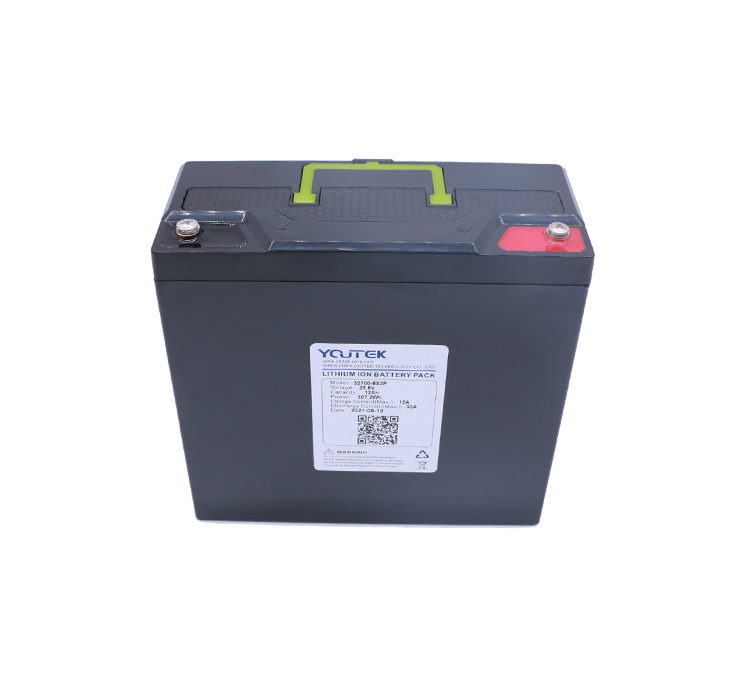
May 17, 2022 | Company News
The LiFePO4 battery is a lithium-ion battery with lithium iron phosphate LiFePO4 as the positive electrode material and carbon as the negative electrode material. During charging, some of the lithium ions in the lithium iron phosphate are extracted, transferred through the electrolyte to the negative electrode and embedded in the negative carbon material; at the same time, electrons are released from the positive electrode and reach the negative electrode from the external circuit to keep the chemical reaction in balance. During the discharge process, lithium ions are withdrawn from the negative electrode and pass through the electrolyte to the positive electrode. At the same time, electrons are released from the negative electrode and reach the positive electrode from the external circuit to provide energy to the outside world.
The 24V 12Ah LiFePo4 battery has the advantages of high operating voltage, high energy density, long cycle life, good safety, low self-discharge rate and no memory effect.
Introduction of 24V 12Ah LiFePo4 battery
In the crystal structure of LiFePO4, the oxygen atoms are arranged in a hexagonal dense stack. The PO43-tetrahedra and FeO6 octahedra form the spatial framework of the crystal. Li and Fe occupy octahedral voids, while P occupies tetrahedral voids. Fe occupies the homo-angular positions of the octahedra, while Li occupies the homo-angular positions of the octahedra. The FeO 6 octahedra are connected to each other in the bc plane of the crystal, and the LiO 6 octahedra are connected to each other in the b-axis direction to form a chain structure. One FeO 6 octahedron is aligned with two LiO 6 octahedra and one PO43-tetrahedron. The FeO6 co-edge octahedral network is discontinuous and therefore unable to develop electronic conductivity; at the same time, the PO43-tetrahedra limit the volume change of the lattice, affecting Li + deembedding and electron diffusion, resulting in a very low conductivity and ion diffusion efficiency of the LiFePO4 cathode material. The LiFePO4 cell has a theoretical specific capacity of approximately 170 mAh / g and a discharge plateau of 3.4 V. Li + is uncoupled back and forth between the positive and negative electrodes to achieve charging and discharging. During charging, an oxidation reaction takes place. Li + migrates out of the positive electrode and is inserted through the electrolyte into the negative electrode. Iron changes from Fe2 + to Fe3 + and an oxidation reaction takes place.
24V 12Ah LiFePo4 battery structural features
On the left side of the LiFePO4 battery is a cathode made of LiFePO4 with an olivine structure, which is connected to the cathode of the battery by means of an aluminium foil. On the right side is the negative side of the battery made of carbon graphite, which is connected to the negative side of the battery by means of a copper foil. In the middle is a polymer spacer, which separates the positive and negative electrodes. Lithium ions can pass through the spacer, but electrons cannot pass through the spacer. The battery is filled with electrolyte and is sealed by a metal case.
Characteristics of the 24V 12Ah LiFePo4 battery
24V 12Ah LiFePo4 battery has good safety features
The electrochemical properties of the lithium iron phosphate lithium battery cathode material are relatively high and stable, and it is determined to have a stable charge and discharge plateau. Therefore, the structure of the battery will not change during charging and discharging, nor will it burn or explode. It remains safe even under special circumstances such as short-circuiting, over-charging, crushing and pinching.
24V 12Ah LiFePo4 battery long cycle life
The 1C cycle life of LiFePO4 batteries typically reaches 2000 cycles, even more than 3500 cycles.
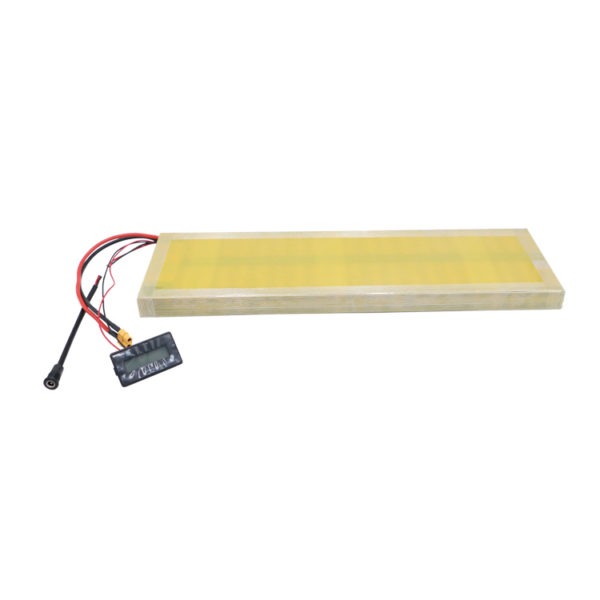
May 12, 2022 | Company News
In recent years, with the progress of lithium technology and the reduction of production costs, lithium batteries as the main power source of lithium electric scooters also flew into the common people, lithium compared to the traditional lead-acid batteries, has a light quality, long cycle life, high energy density, fast charging speed and other advantages. Most lithium batteries are designed to last around 1000 cycles (ordinary ternary lithium materials), which is 3-4 years. But this does not mean that after 3-4 years of use, the life of the lithium battery is terminated, as long as the usual attention to these points, 36V 12Ah skateboard battery life can be doubled! We take the current mainstream ternary lithium battery as an example, the mainstream manufacturers produce lithium batteries with 18650 cells, the main characteristics are high energy density, high cycle life, moderate manufacturing costs, but the use of the environment and charging requirements are relatively high.
36V 12Ah skateboard battery is afraid of cold and heat, do not use in extreme environments
In summer many people like to put the lithium battery electric scooter in the sun, or in winter is also parked in the yard or on the road, which is very unfavourable for the service life of lithium batteries, lithium ion in the electrolyte and electrode sheet migration rate is closely related to the temperature, theoretically the temperature between -20 ℃ -55 ℃ can be used normally, in daily life, lithium battery temperature between 5 ℃ -35 ℃ In daily life, the lithium battery can be used at a temperature between 5°C and 35°C. The lithium battery is not harmed by the temperature between 5°C and 35°C. Users in the north should store the lithium battery at home in winter, not outdoors, and avoid exposure to the sun in summer.
36V 12Ah skateboard battery should not be charged and discharged in depth often
Many people think that the electric scooter manual lithium battery hundreds of times the number of cycle charging is as long as plug once even if used once, in fact, this is a misunderstanding, the manual actually refers to the number of completely re-discharge, lithium batteries are different from nickel-cadmium batteries, lithium batteries do not have any memory effect, can be recharged at any time, anywhere, the battery has spare power to charge not only will not shorten the service life, but also to the battery The correct approach for lithium batteries is to charge them slowly rather than deeply.
The 36V 12Ah skateboard battery should be charged with a suitable charger to avoid high currents.
The chemical activity of Li-ion batteries is much more active than lead-acid batteries, and the requirements for chargers are much higher. Once you use a miscellaneous charger or an unsuitable fast charger, it will not only affect the service life of the Li-ion battery, but also cause an explosion due to overheating and short circuiting of the diaphragm. In addition, 18650 battery is 3c discharge, your electric scooter is 350w, with the battery is lower than your electric scooter discharge current, this will lead to lithium battery temperature is too high, the current is too large and shortened life, there will be bulging scrap, if your electric scooter car power is very large, very fast, it is recommended to choose 10c current 18650 battery, so choose the right It is obviously very important to choose the right battery cell!
Don’t “overcharge”, don’t “activate” the lithium battery
Many users buy a 36V 12Ah skateboard battery and then charge it for 10-12 hours for the first three times as they do with lead-acid batteries, thinking that the lithium battery needs to be activated, which actually affects the life of the lithium battery. The correct approach is to unplug the battery after it has been fully charged. 36V 12Ah skateboard battery should not be charged overnight as it is prone to fire.
36V 12Ah skateboard battery does not need to be stored fully charged
36V 12Ah skateboard batteries (18650 cells) are usually purchased with 2-3 cells, rarely with a full charge, and a long storage time with a full charge will reduce the capacity of the lithium battery. Another thing to note is to choose a better quality protection plate. Pay attention to these points, your electric scooter car lithium battery with a five or six years is no problem.
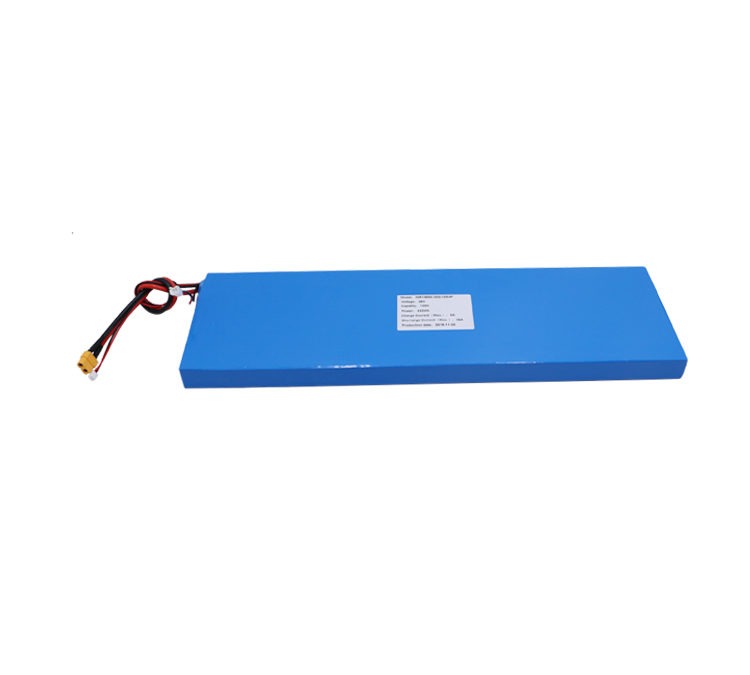
May 11, 2022 | Company News
How long does a 36V 12Ah skateboard battery last? What should I do if the battery power drops? How can I extend the life of my 36V 12Ah skateboard battery? With these questions follow me to see how to extend the life of electric scooters?
The short life of most scooters is mainly due to the improper use of the battery. The charging time should be reasonably controlled according to the number of miles travelled, and the charging time should not be too long.
How exactly do I charge my scooter to extend the life of the battery?
It is best to charge it every day. The charging time for electric scooters should basically be controlled within 5 hours, too long a charging time can easily damage the battery. Each charge should be done before the battery runs out of power, so that the damage to the battery is less and the life span of the battery is longer. The key to the life of an electric scooter is to use and maintain the battery in a reasonable manner.
If the scooter is used every day, it should be charged every day, unless it is driven less than a kilometre or two. When charging it must be fully charged. When the red indicator light of the charger is on, it means that the battery enters a constant voltage floating charge state, which does not mean that the battery is sufficient (about 70-80% charged). In general, the battery can be fully charged in 3-5 hours. The charger green light comes on when fully charged. Once charged, the battery should be fully charged regardless of how much power it has consumed.
When starting out on a ride, do not rely on electric start alone, but with foot pedal assistance; in addition, even if you do not use it for a long time, you should charge the battery once every half month. This will extend the life of the battery. In addition, the tyres should be fully inflated and the electric door should be closed in time when getting off the bike.




